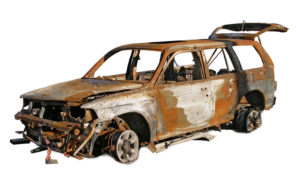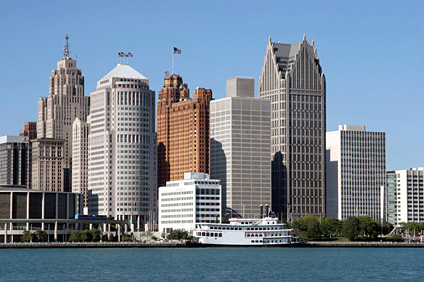Contents
THE CHAPTER 13 BANKRUPTCY CRAMDOWN: PAY WHAT IT’S WORTH
In a Chapter 13 bankruptcy, unlike a Chapter 7 bankruptcy, you repay to your creditors some of what you owe over a 3-5-year period. Depending on what sorts of creditors you have, certain creditors will be repaid in priority over other creditors.
One of the primary tasks of your bankruptcy attorney is to work with you to draft and file a Chapter 13 payment plan, or “plan of reorganization,” which is filed with the Bankruptcy Court at the outset of your Chapter 13 case.
This Chapter 13 plan proposes an amount to pay monthly based on your available net income after your necessary household expenses are accounted for.

A Chapter 13 bankruptcy plan may allow you to “cramdown” the amount you owe on your vehicle to it’s present fair market value.
The Plan proposes a number of months for which you will make payments to the Chapter 13 Trustee assigned to your case, who will then distribute those funds to your creditors.
It finally proposes which creditors are to be paid how much and in what priority order.
The U.S Bankruptcy Code, which is the Federal statute governing the bankruptcy process, provides the required prioritization of the different possible types of creditors: administrative, secured, secured arrearages, executory contracts and leases, priority unsecured, and non-priority unsecured.
After the “administrative expenses” (the fees of the Chapter 13 Trustee and your own bankruptcy attorney), secured debts or claims are paid next in the priority.
A secured debt is a debt in which the amount of money that you owe to the creditor is “secured” by some property serving as collateral for the loan. In the case of a mortgage, this would generally be the home you purchased. In the case of a car loan, it would be the car.
What happens when the collateral is worth much less than you owe on the loan? What if you owe $20,000 on a car loan and the car is only worth $2,000?
That is where the Chapter 13 bankruptcy “cramdown” comes in.
THE CHAPTER 13 BANKRUPTCY CRAMDOWN: WHAT IS IT?
The Chapter 13 cramdown is one of the most beneficial features of a Chapter 13 bankruptcy.
The cramdown is a Chapter 13 plan “treatment” of a secured debt in the situation of undervalued collateral.
Essentially, the cramdown bifurcates, or splits, the amount you owe to that secured creditor in two:
- A high priority secured treatment for the amount of the claim equal to the actual current value of the collateral;
- A low priority treatment of the remaining balance as last-to-be-paid, non-priority unsecured debt (like a credit card balance or medical debt).
In a Chapter 13 bankruptcy, unless the value of your assets greatly exceeds the value of your debt or your income is very high, you only pay your low-priority unsecured creditors whatever is left over after the priority creditors are fully paid—and then the balance is totally discharged as in a Chapter 7 bankruptcy.
Thus, if you did owe $20,000 on a $2,000 (Kelley Blue Book value) car, you would pay the auto loan lender $2,000 plus what is known as “Till Rate” interest (prime rate + 1-2%, usually no higher than 5.25% total) as a priority secured debt over the life of the Chapter 13 plan.
The remaining $18,000 would just be treated as unsecured debt. Toward that amount, the lender will receive whatever proportion of distributed payment the Chapter 13 Trustee sends to the other unsecured creditors. This can be as low as 1% of the amount owed, depending on your income, expenses, assets, and overall Chapter 13 plan.
WHAT CAN BE CRAMMED DOWN IN A CHAPTER 13 BANKRUPTCY?
Cramdown of Mortgages, Home Equity Loans, and Lines of Credit:
A mortgage or other lien for your primary residence cannot be crammed down in Chapter 13 bankruptcy.
Although what is and what is not a “primary residence” has been the subject of litigation over the years, it essentially means the house that you actually reside in, not necessarily the address on your Michigan driver’s license, etc.
Otherwise, an investment property or a rental or vacation home can, in theory, be crammed down. You can certainly expect to battle with the attorney for the mortgage lender over the value of the home and the interest-rate proposed in the Chapter 13 plan cramdown treatment when this is attempted.
A proper appraisal by a licensed and certified appraiser (approved by your bankruptcy attorney) of the home directly before the filing of the Chapter 13 case will be essential.
There may be other issues with the attempt at cramming down a second real property (especially a vacation or “luxury” home that doesn’t earn income for you), depending on how much your unsecured creditors are proposed to receive through your Chapter 13 plan, but that is an issue to discuss with your bankruptcy attorney.
Cramdown of Vehicle Loans:
A vehicle loan can only be crammed down if you have owned it for 910 days or more, and the vehicle must be owned for personal use only. That is, it cannot be owned for business or commercial purposes.
Further, in the Eastern District of Michigan, the vehicle must have 75,000 miles on it or more for the cramdown to be permitted.
Cramdown of other Secured Loans:
Any other loan secured by personal property can also be crammed down but only if 1 year or more has elapsed since the purchase.
THE CHAPTER 13 BANKRUPTCY CRAMDOWN: FAILURE TO COMPLETE THE PLAN OR CASE DISMISSAL
A word of warning regarding the Chapter 13 bankruptcy cramdown: If you fail to complete your Chapter 13 plan, whether due to dismissal or denial of discharge for failure to turn over tax returns or some similar issue, you will not obtain the benefit of the cramdown upon case closure.
That is, you’ll exit your unsuccessful Chapter 13 bankruptcy process owning the full contractual balance of the loan, plus accrued contractual interest for the number of months you were in the Chapter 13 process.
In short, once you embark upon a Chapter 13 bankruptcy journey involving a cramdown or a lien strip or any other modification of secured or priority claims, it is all the more important that you finish what you start.
THE CHAPTER 13 BANKRUPTCY CRAMDOWN: THE BOTTOM LINE
The bottom line with regard to the Chapter 13 cramdown option, it is essential that you have experienced bankruptcy counsel representing you. Just because the Bankruptcy Code says you can cramdown your secured loan does not mean that you will not receive a volley of objections from the creditor or the Chapter 13 Trustee to your attempt to do so.
Attorney Walter Metzen is a Board Certified Bankruptcy Expert with more than 30 years of experience representing individuals in Chapter 7 and Chapter 13 bankruptcy—and in dealing with the objections of creditors.
The Law Offices of Walter A. Metzen & Associates offers free consultations for those interested in the bankruptcy process and is experienced in determining and advising as to the best course of action when filing a Chapter 13 bankruptcy in Michigan.




